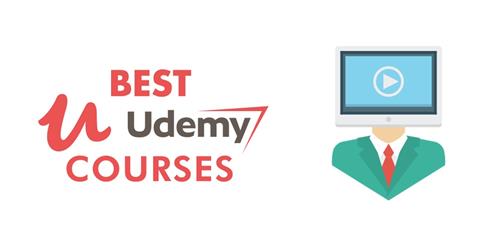Vehicle Dynamics – Matlab & Simulink Examples

Free Download Vehicle Dynamics – Matlab & Simulink Examples
Published 10/2024
MP4 | Video: h264, 1920×1080 | Audio: AAC, 44.1 KHz
Language: English | Size: 2.56 GB | Duration: 7h 1m
In this course you will learn basics of vehicle dynamics, forming state space matrices and simulating vehicle behavior.
What you’ll learn
have a basic understanding of the cornering force characteristics of pneumatic tires,
be able to analyze the plane motions of road vehicles using the bicycle model,
extend the use of the bicycle model to the handling analysis of articulated vehicles,
have an insight into the the basic ideas of four wheel steering and the classical control strategies,
be familiar with various higher order vehicle models used for handling analysis,
understand the basic ride motions of vehicles,
be able to model vehicles for ride studies and model road surfaces as inputs to these models,
obtain the response of vehicle models to road inputs and evaluate the ride quality,
be familiar with the design and optimization of passive and active suspension systems.
Requirements
Have a basic understanding of dynamics
Basic matlab experience
Description
In this course we will learn about main equations of a vehicle during cornering, and ride comfort. You will grasp some core logics in handling, like understeer and oversteer; where you will be able to interpret simulated results in matlab.For the modelling of the vehicle’s dynamcis equations, some basic differential algebra is required, and state space method is introduced to model vehicle systems. Derivations of underlying equations are not explained in detail, however they are shown in diagrams and main points are emphasized. In this regard, this course is a supplementary course, which focuses on simulation and analyzing part. There are great books to study vehicle dynamics in detail.You will learn some technical skills and tricks on how to create some basic steering inputs and road profiles, and most optimum way to write matlab functions for state space generation of a vehicle model.Since you will study theoritical framework between equations, you will be able to understand pros and cons of different models and how & when to apply them, as well as to how to approach problems.On top of this, you will learn fundemental control methods to state-space systems in the case of vehicles, state feedback and LQR strategies. Course includes homeworks, and some of the homeworks may be challenging, in that case look for the solution and ask the parts you are interested in to me. There is repeating theme occuring in homeworks such that you will get used to this modelling approach quickly to move on your projects.
Overview
Section 1: Chapter 1: Vehicle handling basics
Lecture 1 Introduction
Lecture 2 Chapter 1: Lateral acceleration
Lecture 3 Chapter 1: Load transfer
Lecture 4 Chapter 1: Tires
Lecture 5 Chapter 1: Cornerig Force Characteristics
Lecture 6 Chapter 1: Secondary Parameters
Lecture 7 Chapter 1: Self-aligning Torque
Lecture 8 Chapter 1: Tire models
Lecture 9 Chapter 1: Linear models
Lecture 10 Chapter 1: Nonlinear models
Lecture 11 Chapter 1: Dugoff model
Lecture 12 Chapter 1: Magic formula
Lecture 13 magic formula matlab example
Lecture 14 Lecture Slides
Section 2: Chapter 2: Vehicle handling bicycle model
Lecture 15 Intro
Lecture 16 Chapter 2: Vehicle model
Lecture 17 Chapter 2: Bicycle model
Lecture 18 Chapter 2: Introduction to state space
Lecture 19 Chapter 2: Stability Analysis
Lecture 20 Chapter 2: Handling Characteristics
Lecture 21 Chapter 2: Another look at handling
Lecture 22 Chapter 2: Common mistakes to be avoided!
Lecture 23 Lecture Slides
Section 3: Chapter 3: Articulated Vehicles
Lecture 24 Introduction to Simulink – Slip angle block
Lecture 25 Chapter 3 – Articulated Vehicles
Lecture 26 Chapter 3 – Single degree of freedom model
Lecture 27 Chapter 3 – Three degree of freedom model
Lecture 28 Chapter 3 – Stability Analysis
Lecture 29 Chapter 3 – Steady State Behavior
Lecture 30 Chapter 3 – Articulated vehicle instabilities
Lecture 31 Lecture Slides
Section 4: Chapter 4: 4 Wheel Steering
Lecture 32 Chapter 4: 4WS
Lecture 33 Chapter 4: 4WS vehicle model
Lecture 34 Chapter 4: 4WS strategies
Lecture 35 Chapter 4: A Selection of control strategies
Lecture 36 Chapter 4: 4WS examples (Optional)
Lecture 37 Lecture Slides
Lecture 38 Chapter 4: Matlab Simulation Example (Optional)
Section 5: Chapter 5: Roll Center & Roll Axis
Lecture 39 Chapter 5: Roll Center & Roll Axis
Lecture 40 Lecture Slides
Section 6: Chapter 6: 3DOF Bicycle Model
Lecture 41 Chapter 6: Higher DOF models
Lecture 42 Chapter 6: 3 DOF model
Lecture 43 Lecture Slides
Section 7: Chapter 7: Ride Comfort
Lecture 44 Chapter 7: Ride Comfort
Lecture 45 Chapter 7: Body Bounce
Lecture 46 Chapter 7: Wheel Hop
Lecture 47 Chapter 7: Quarter Car Model
Lecture 48 Chapter 7: Quater Car Simulation Problem
Lecture 49 Chapter 7: Quarter Car Model Simulation in Matlab
Lecture 50 Chapter 7: Quater Car Transfer Function in Matlab
Lecture 51 Chapter 7: Transfer Functions
Lecture 52 Chapter 7: Invariant Points (Optional)
Lecture 53 Chapter 7: Half Car Model
Lecture 54 Chapter 7: 4DOF Model
Lecture 55 Lecture Slides
Section 8: Chapter 8 : Suspension Control
Lecture 56 Chapter 8 : Active Suspensions
Lecture 57 Chapter 8 : Basic Active Suspension Model
Lecture 58 Chapter 8 : Introduction to LQR control
Lecture 59 Chapter 8 : LQR control example
Lecture 60 Chapter 8 : Active Quarter Car Model
Lecture 61 Chapter 8: Active Quarter Car Control Example
Lecture 62 Lecture Slides
Those who want to impove themselves on vehicle simulation and control
Homepage
https://www.udemy.com/course/vehicle-dynamics-matlab-simulink-examples/
DONWLOAD FROM RAPIDGATOR
tjohv.Vehicle.Dynamics..Matlab..Simulink.Examples.part1.rar.html
tjohv.Vehicle.Dynamics..Matlab..Simulink.Examples.part2.rar.html
tjohv.Vehicle.Dynamics..Matlab..Simulink.Examples.part3.rar.html
Fikper
tjohv.Vehicle.Dynamics..Matlab..Simulink.Examples.part3.rar.html
tjohv.Vehicle.Dynamics..Matlab..Simulink.Examples.part1.rar.html
tjohv.Vehicle.Dynamics..Matlab..Simulink.Examples.part2.rar.html